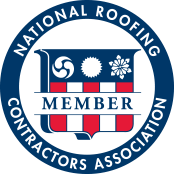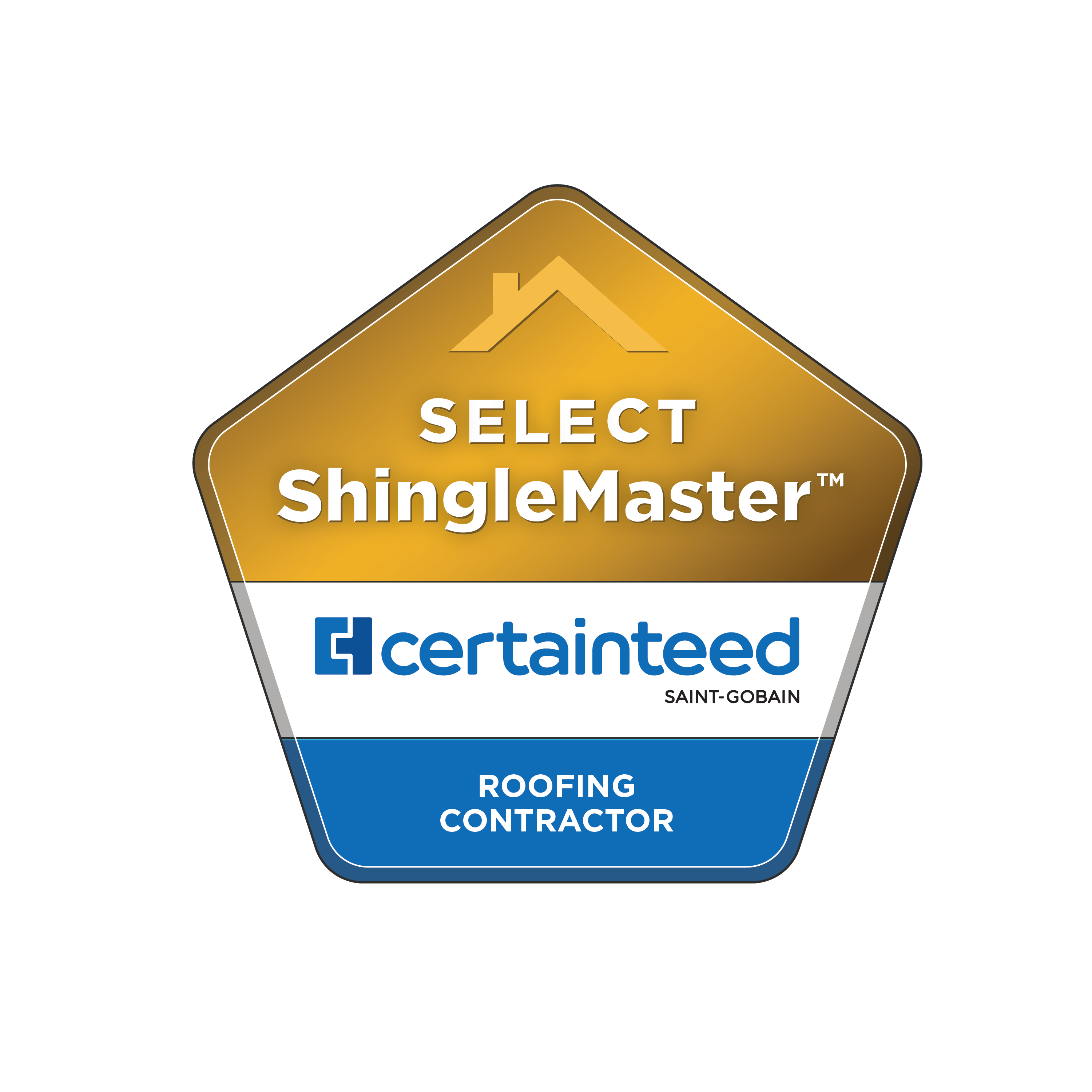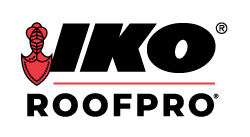Roof ventilation is a critical aspect of maintaining a healthy and functional home environment. Ensuring efficient airflow in your attic is essential to prevent issues like mould growth and ice dams. With different roof vent options available and each boasting unique advantages and drawbacks, it can be challenging to know which one is right for you. In this article, we’ll explore the pros and cons of different types of roof vents so you can find the best option for your home.
Contents
Roof Ridge Vents
A ridge vent is a type of static vent that runs along the entire ridgeline of the roof. They are designed to allow air to escape from the attic while keeping out rain, snow, and debris. Ridge cap shingles are usually installed over the vent to conceal and protect it.
Pros
Used in conjunction with soffit vents, which allow air to enter the attic, ridge vents can be one of the most effective ways to provide ventilation to your attic. Because it has no moving parts, it is unlikely to break. A ridge vent has the added advantage of providing uniform ventilation throughout the attic to avoid hot and cold spots.
Cons
When comparing roof ridge vent pros and cons, keep in mind that they may potentially leak in heavy storms, aren’t ideally suited to warmer climates, and must be installed on your roof peak. If you have the right environment set up for one, however, they are great investments.
Box Vents
Box vents are static vents that use the wind to create natural convection, moving hot air and moisture out of the attic. Multiple vents are typically installed around the roof, depending on the square footage of your attic, to maximize ventilation.
Pros
These types of vents are easy to install and can be strategically placed in the spots you need them most. They can be ideal if you have a complex roof with many valleys. You can also coordinate their colours to match your house’s style.
Cons
Box vents are smaller in size, so they may not be able to expel hot air and moisture as quickly as other types of vents. They can also be susceptible to cracks from damaging weather like hail and snow.
Cupola Vents
Cupola vents are another type of static vent that allows for natural airflow and convection. They are typically installed with curb appeal in mind, as they look like miniature houses on the top of your roof. While cupola vents can be a good option for residential homes, they are also common for barns and cathedrals.
Pros
These types of vents are often used for both ventilation and decoration. This means that you can expel the hot air from your attic while increasing your home’s curb appeal and value. You can also choose from many shapes and sizes.
Cons
This option can be on the pricier side in comparison to other vents. While they are nice to look at, they are often more difficult to install and maintain. Birds may also build nests inside the cupola, which blocks airflow.
Turbine Roof Vents
This type of roof vent relies on the outside wind to spin a turbine. When this turbine is spun, hot air from the attic will be drawn up through the vent and expelled to the outside.
Pros
Wind-powered roof vents have the considerable advantage of using a free and renewable resource as a power source. These types of vents are common and easy to find and often move air faster than static vents because of the spinning turbine.
Cons
You need to have sufficient wind in order to get the most out of them. Therefore, when weighing the pros and cons of turbine roof vents, consider how much wind they will be exposed to in the first place before installing them on your roof. If your house is in a sheltered location, you may find other venting systems more effective. Additionally, too much wind can cause them to break off your roof. Another key disadvantage of wind-powered vents is that the moving parts can become quite noisy as they age.
Electrical Roof Vents
Power vents use electric-propelled fans to remove moisture and hot air from your attic. They include adjustable thermostats to turn on the fan at certain attic temperatures and humidity levels.
Pros
Powered vent systems are quiet and sophisticated and can allow you to ensure that your attic receives adequate ventilation.
You can set them to activate at a specific temperature or humidity to ensure that your attic’s climate is kept at an appropriate level. You can wire them into the home’s electricity, or they can run on solar power. Powered vent systems may be necessary to ensure proper ventilation in a more complex roof system. Ultimately, they allow you to move attic air when necessary without relying on the wind.
Cons
One main drawback of powered vents is that they do sometimes break down, and a broken vent may go unnoticed by the homeowner for quite some time because it operates quietly. Therefore, frequent inspections are necessary. Additionally, they can produce more power and drive up energy costs by running off your home’s electricity.
Off-Ridge Vents
Off-ridge vents offer a versatile solution for optimizing roof ventilation. Unlike traditional ridge vents running along the roof’s peak, off-ridge options can be strategically placed to provide more flexibility in their installation. This versatility allows homeowners to tailor ventilation systems to the unique characteristics of their roofs and attics.
Pros
One of the key advantages of off-ridge vents is their compatibility with other vent types. By combining off-ridge vents with ridge vents or other ventilation solutions, homeowners can achieve a balanced and efficient airflow throughout the attic space. This approach enhances the overall effectiveness of the ventilation system, reducing the risk of issues such as heat buildup and moisture accumulation.
Cons
However, it’s important to note that installing off-ridge vents may require a bit more expertise due to their non-traditional placement. Homeowners should consult roofing professionals to ensure proper installation and integration with existing ventilation components.
When executed correctly, off-ridge vents contribute to a well-ventilated attic environment, promoting the longevity of the roof structure and preventing potential problems associated with inadequate ventilation.
Solar-Powered Vents
Solar-powered vents are a sustainable and energy-efficient solution for enhancing roof ventilation. These innovative options incorporate solar panels to generate electricity, powering built-in fans that actively expel hot air from the attic. The key advantage lies in their ability to operate autonomously, reducing dependence on conventional power sources and lowering overall energy costs.
Pros
One notable benefit of solar-powered vents is their eco-friendly nature. By utilizing clean, renewable solar energy, these vents contribute to a greener and more sustainable home. The initial investment in solar-powered vents may be higher, but the long-term savings and environmental benefits make them a compelling choice for environmentally conscious homeowners. In regions with abundant sunlight, these vents shine, providing efficient cooling and reducing the risk of heat-related issues in the attic.
Cons
External factors influence solar-powered vent efficiency. Cloudy days or nighttime may limit their operation, potentially impacting overall ventilation during such periods. It’s essential for homeowners to consider their local climate and sunlight exposure when evaluating the feasibility of solar-powered vents.
Soffit Vents
Soffit vents play a crucial role in creating a well-balanced and adequate roof ventilation system. These vents sit beneath the eaves along the soffit and serve as intake points for fresh air to enter the attic space. This option works in harmony with other exhaust vents, like ridge vents, to facilitate continuous airflow, preventing the accumulation of heat and moisture in the attic.
Pros
One of the primary advantages of soffit vents is their strategic placement near the roof’s lowest point. This positioning allows them to draw in cooler, fresh air from the outside, creating a natural flow that pushes hot air upward and out through the higher exhaust vents. This process helps maintain a consistent temperature in the attic, reducing the workload on cooling systems and minimizing the risk of moisture-related issues like mould and rot.
Cons
While soffit vents are highly effective, proper installation is critical. Soffit vents must be installed in conjunction with proper sealing and insulation to prevent issues. If the attic is not adequately sealed, outdoor air may carry moisture into the space. Soffit vents can also be obstructed by debris, hindering the intake of fresh air.
Picking the Right Roof Vent
Choosing between the different types of roof vents depends on your budget, type of roof, and overall needs. It is recommended that you do your research and consult with a professional about their opinion before you decide. Need a hand finding the right types of roof vents for your home or business? We’re here to help at Roofmaster! Get in touch with our team today for a consultation so we can ensure you make a well-informed purchasing decision.










